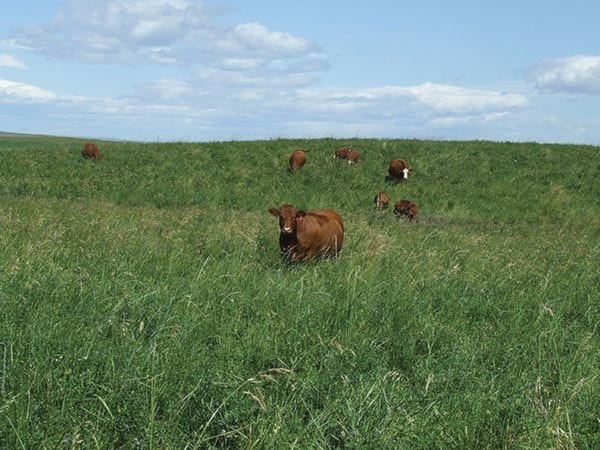Submitted by Ducks Unlimited Canada
On land not so far away, farmers across the Canadian prairies will see their herds going to the green side thanks to a forage program available now from Ducks Unlimited Canada (DUC) and Crop Production Services (CPS).
Available to agricultural producers in Alberta, Saskatchewan and Manitoba, the DUC/CPS forage program provides cash-back incentives on all Proven® Seed forage seed purchases paid at full-retail price when producers convert cultivated land to hay or pastureland. In Alberta and Saskatchewan, producers receive a rebate of $100 per 50 lb. bag of forage seed; in Manitoba, producers receive a rebate of up to $125 for every new forage acre seeded as part of the program.
With the growing need for high quality pastureland, it’s expected that this year’s program will be an attractive option for producers, says Craig Bishop, DUC’s regional forage lead, especially in light of economic and climatic conditions.
“Declining prices for wheat and other cereal crops, as well as a simultaneous increase in beef prices, are leading many landowners to increase the size of their cattle herd,” explains Bishop. “This spurs a demand for more forage. Last year’s weather conditions also resulted in poor hay crops and further motivated producers to convert more land to forage. In 2016 across the Prairies, 30,000 acres of cultivated fields were seeded to grass under this program with CPS.”
Bishop adds that reducing input costs, especially at a time when expenses are rising more quickly than revenues, makes a real difference to a farmer’s or rancher’s bottom line. “Offering incentives to producers to convert cultivated acres to forage is an extremely cost-effective means for increasing grassland and it makes good agronomic sense. Essentially, the program covers approximately 40–50 per cent of the producer’s seed investment.”
In addition to helping cattle producers, more forage acres also benefits waterfowl. Bishop explains that research shows that the level of waterfowl nesting is significantly higher in areas of perennial cover than in cultivated fields. It also helps with other conservation measures such as wetland restoration.
“The link between wetlands, associated grasslands and waterfowl productivity is well understood,” says Bishop, “and initiatives like the DUC/CPS forage program ensures that farmers in Alberta, Saskatchewan and Manitoba also receive benefits from increasing their forage base.”
The DUC/CPS forage program is best suited for producers in the parkland and prairie regions. Anyone interested in the program or who wants more information should contact their local CPS retailer or DUC conservation program specialist.
